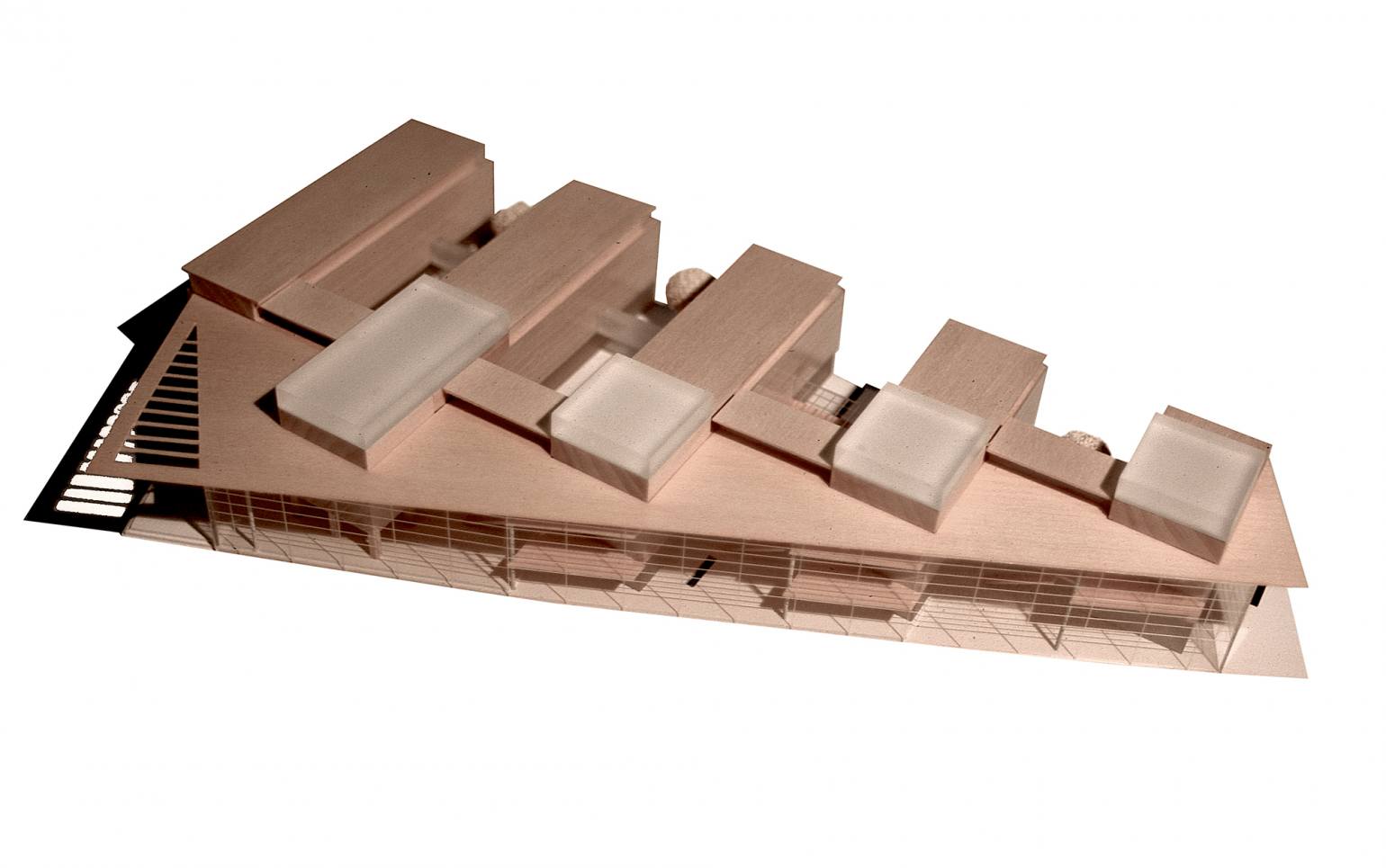HVB Real Estate – Administration Building Theresienhöhe-Süd MK1, Munich
Client
HVB Real Estate AG, Munich
Competition 1st prize
2001
Planning period
2001 - 2002
Performance phases
1 - 8
Execution stopped after start of performance phase 8
Team
Planning: Birger Bhandary, Andreas Mrusek, Andreas Wurmer, Silke Koller, Site management: Andreas Ullrich
Building data
Total cost 71,000,000 €
Gross floor area 37,862 m²
The aims of the design of the Hypo Real Estate Administration Building include linkage, transparency and integration of a large structure in the building landscape of the residential clusters and perimeter blocks of the new city district Theresienhöhe.
Existing buildings are continued with a linear construction style and completed with a glass-enclosed space towards the street along the Theresienwiese, which is an open space seasonally used as the Oktoberfest grounds. Open courtyards between five parallel office wings projecting at different lengths connect the green spaces of the residential structures with the green areas of the Theresienwiese. The five-storey office wings cut into the elongated atrium hall and form a new significant city silhouette in conjunction with the six-storey end structures projecting above the edge of the roof. The staggered structures divide the adjoining multi-storey glass hall into small atria, providing each office wing with an own characteristic foyer and serving as a space for events and meetings.
A large forecourt with a generously projecting roof in the south and a small court in the north lead into the glazed circulation area. This space is open to the public and users of the building for common use, meetings and events, with loggias and balconies jutting out into the airspace of the atria and offering a view of the city. The atrium hall also functions as an acoustic and thermal buffer zone for the office areas.
Office floor plans are conventional and permit a variety of office types from cell to group offices as well as flexibility with regard to new task structures in the future. The dining area (Casino) is located in the middle of the ensemble at the intersection of the building axes and forms a link with a view of the neighbouring residential buildings.
The façades play a significant role in the appearance of the building. Coloured screen-printed glass elements in front of the glass façade of the office wings symbolise the change in light during the course of a day across the entire length of the building, with colour shades changing from east to west: warm tones correspond to the rising sun and blue shades represent light at dusk.



